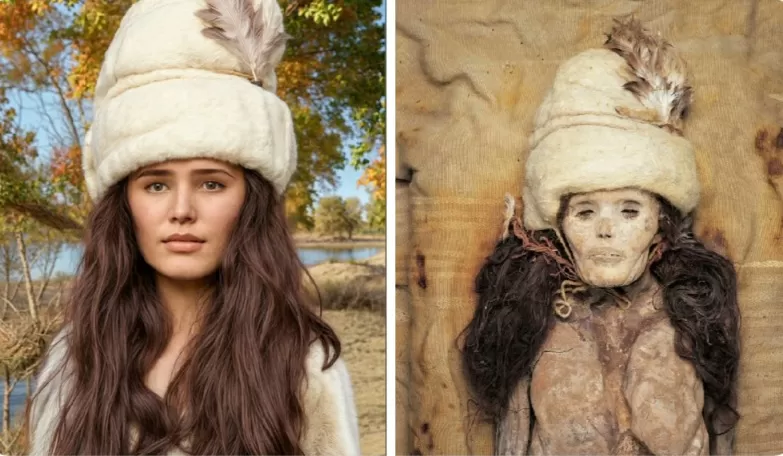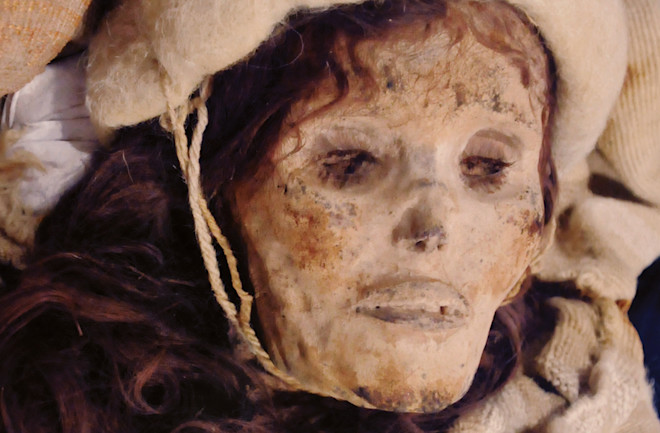The Princess of Xiaohe: Ancient Beauty Preserved for Nearly 4,000 Years
The “Princess of Xiaohe,” or the Little River Princess, is an extraordinary natural mummy whose remarkably preserved remains offer a stunning glimpse into the Bronze Age of the Tarim Basin in present-day Xinjiang, China. Discovered in 2003 at the Xiaohe Cemetery (also known as the Small River Cemetery No. 5), this young woman, believed to have lived around 1800 BCE, has captivated scientists and the public alike with her incredibly intact features, including her long eyelashes, hair, and even delicate facial expression. Her preservation is not due to artificial mummification like the Egyptians, but rather the extreme aridity and saline soils of the Taklamakan Desert, combined with tightly sealed boat-shaped coffins wrapped in shrinking cowhide.

Her burial was as unique as her preservation. The Princess of Xiaohe was interred in a boat-shaped coffin, placed upside down, and marked by a standing wooden pole. She was adorned with a distinctive white felt hat, a white wool cloak with tassels, a string skirt, and fur-lined leather boots. Grave goods accompanying her included wooden pins, small pouches of ephedra (a medicinal plant), and even chunks of cheese, which have been identified as the oldest preserved cheese in the world, likely made with a kefir starter. These details provide invaluable insights into the daily life, clothing, and spiritual beliefs of the enigmatic Xiaohe culture.

Genetic analyses of the Princess of Xiaohe and other mummies from the Xiaohe Cemetery have added fascinating layers to her story. While initial observations of their “Caucasian” features led to speculation about European migration, later genomic studies revealed that the Xiaohe people were a genetically isolated local population with deep ancestral roots in Ancient North Eurasians and a smaller admixture from Ancient Northeast Asians. This suggests they were an indigenous group that adopted pastoralist and agricultural practices from neighboring cultures, thriving along the shifting riverine oases of the Tarim Basin. The Princess of Xiaohe remains a profound archaeological enigma, continually pushing the boundaries of our understanding of ancient human populations and their remarkable resilience.
